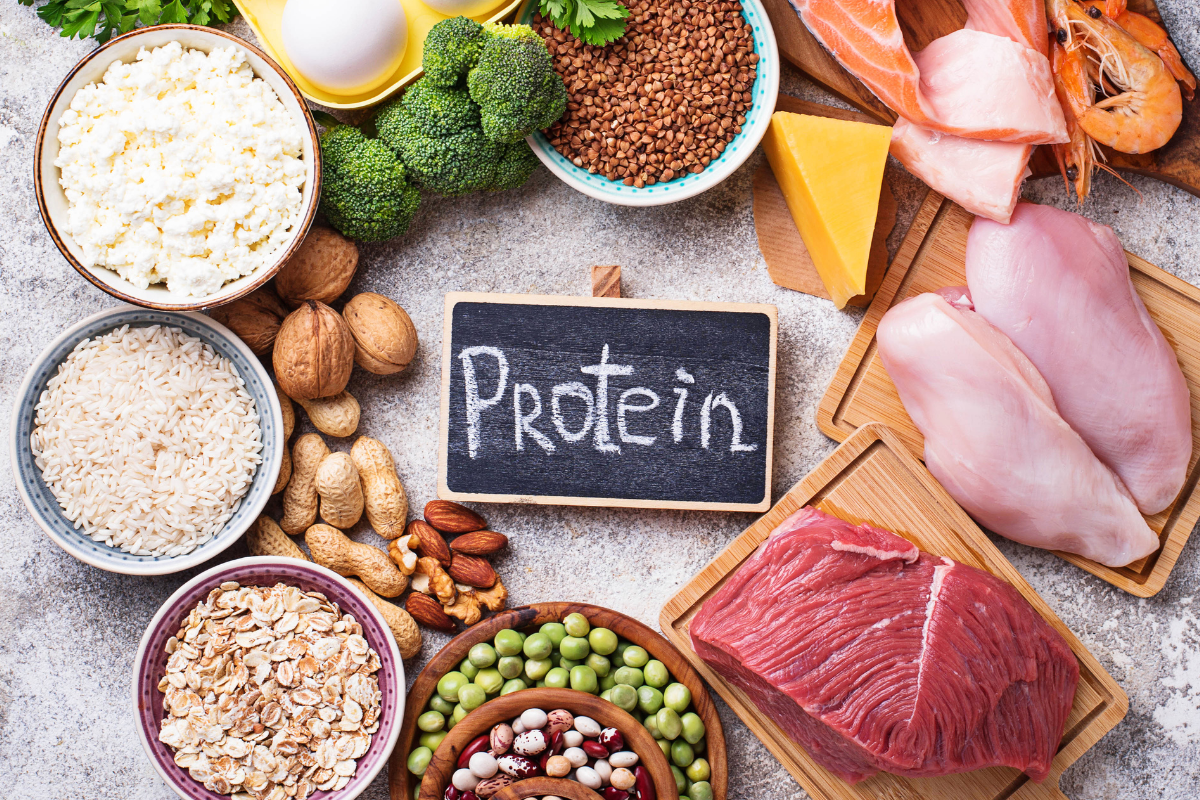Managing Nausea and Food Aversions: Early Pregnancy Nutrition Hacks
The early weeks of pregnancy can feel like a rollercoaster—one day you’re craving pickles, the next you’re repelled by the mere thought of breakfast. Morning sickness (which can strike at any time of day) is surprisingly common, impacting up to 70–80% of pregnant individuals.[1] Although these queasy, food-averse feelings can be unsettling, they don’t have to derail your nutritional goals. In this post, we’ll share practical tips for managing nausea, ensuring adequate nutrient intake, and how OVU bars can help bridge nutritional gaps when your appetite is on shaky ground.
1. Understanding Nausea and Food Aversions
Why Do They Happen?
Early pregnancy triggers a surge in human chorionic gonadotropin (hCG) and other hormones like estrogen and progesterone, which can sensitize your stomach and alter taste preferences. Some experts suggest these aversions might be protective, steering pregnant individuals away from potentially harmful foods during critical developmental stages. However, the exact cause varies from person to person.
Key Fact: For most people, nausea peaks around weeks 8–10 and often improves by weeks 14–16.[2] If you find it persists beyond the first trimester, consult your healthcare provider.
Potential Triggers
-
Strong Smells (cooking odors, perfumes)
-
Empty Stomach (low blood sugar can intensify nausea)
-
Certain Textures or Tastes (greasy or spicy foods)
-
Excessive Stress or Fatigue (elevated cortisol can worsen nausea)
2. Quick Hacks for Managing Morning (or All-Day) Sickness
-
Small, Frequent Meals: Rather than forcing three large meals, try having mini-meals or snacks every 2–3 hours to keep blood sugar stable.
-
Stay Hydrated: Sipping on water, ice chips, or flavored sparkling water can soothe an upset stomach. Just avoid chugging large amounts at once.
-
Ginger Power: Ginger tea, ginger candies, or even fresh ginger slices in water can help calm queasiness.
-
Gentle Carbs: Plain crackers, toast, or rice can settle the stomach, particularly first thing in the morning before you get out of bed.
-
Cold Over Hot: Some women find cold foods (smoothies, chilled fruit, popsicles) easier to tolerate than hot, steamy meals that give off strong scents.
-
Limit Trigger Smells: If cooking odors bother you, consider prepping meals or having someone else cook. Ventilate the kitchen or use an outdoor grill when possible.
3. Key Nutrients to Focus On (Even with Aversions)
Folate / Folic Acid
-
Why It’s Important: Essential for neural tube development (which happens very early in pregnancy).
-
Sources: Leafy greens, legumes, fortified cereals, OVU bars (each includes folic acid to support prenatal needs).
Iron
-
Why It’s Important: Supports increased blood volume and oxygen transport.
-
Sources: Lean meats, spinach, lentils, iron-fortified grains.
-
Tip: If meat or strong-tasting greens are a turn-off, try milder iron sources or iron-enhanced smoothies.
Protein
-
Why It’s Important: Building block of your baby’s cells, supports tissue repair.
-
Sources: Lean poultry, fish, beans, nuts, eggs (if tolerated).
-
OVU Connection: Each OVU bar includes egg whites for high-quality protein, plus plant-based proteins from nuts or peanuts (depending on flavor).
B6 and Ginger
-
Why They Help: Vitamin B6 has been shown to alleviate mild nausea in some pregnant women, and ginger is a classic anti-nausea agent.[3]
-
Sources: Whole grains, beans, bananas for B6; ginger tea or chews for ginger.
-
Tip: While not specific to OVU bars, combining your bar with a banana or a small cup of ginger tea can be a gentle snack or mini-meal.
4. OVU Bars: Your Nausea-Friendly Snack Ally
If you’re struggling with strong aversions, the last thing you want is overly sweet or heavily flavored foods that can worsen nausea. OVU bars are formulated to balance protein, healthy fats, and complex carbs in a moderately sweet package. Here’s how they fit in:
-
Neutral Sweetness: Sweetened naturally with dates, the flavor is subtle enough for many people with morning sickness.
-
Gentle Ingredients: Egg whites for protein, peanuts or almonds for healthy fats, and root vegetables (carrots, sweet potato) that add nutrients without an overwhelming taste.
-
On-The-Go Portability: If smells are triggering, you can nibble on a bar without heating it or dealing with strong cooking odors.
-
Folic Acid + Myo-Inositol: Each bar includes fertility-friendly ingredients that can further support early pregnancy nutritional goals.
Which Flavor to Choose?
-
Blueberry Almond: Mild berry sweetness and nutty crunch—can be especially appealing if you tolerate fruit flavors well.
-
Cocoa-Coconut: Gentle cocoa note without being intensely chocolatey, plus coconut’s subtle richness.
-
Peanut Crunch: Balanced sweet-savory profile that satisfies if you crave a bit of saltiness (but not too much).
5. Simple Meals and Snacks for Queasy Days
Below is a one-day meal plan designed with nausea in mind, featuring bland or lightly flavored foods.
Breakfast (7–8 AM)
-
Plain Crackers or Toast with a light spread of nut butter
-
Small cup of ginger tea (or regular tea if tolerated)
Mid-Morning Snack (10–11 AM)
-
OVU Peanut Crunch bar (mild flavor, easy protein source)
Lunch (12–1 PM)
-
Broth-Based Soup (e.g., chicken or vegetable broth with soft veggies)
-
Small side salad (if leafy greens are tolerable) or cucumber slices for mild crunch
Afternoon Snack (3–4 PM)
-
OVU Blueberry Almond bar (fruity twist without overpowering sweetness)
-
Banana or mild fruit like apple sauce
Dinner (6–7 PM)
-
Plain Baked Chicken or fish (season with salt, pepper, or mild herbs)
-
Mashed Sweet Potatoes (gentle carbs, vitamin A)
-
Steamed Carrots or Zucchini (soft texture, mild taste)
Evening Treat (8–9 PM)
-
OVU Cocoa-Coconut bar if you need a slight chocolate fix without a sugary overload
6. Handling Persistent Nausea or Hyperemesis Gravidarum
While common “morning sickness” often eases around the second trimester, some individuals experience more severe and persistent symptoms known as Hyperemesis Gravidarum (HG). If you’re:
-
Unable to keep any foods or fluids down
-
Losing weight rapidly
-
Experiencing extreme fatigue or dehydration
Consult your healthcare provider promptly. Medication or IV fluids might be needed to ensure you and your baby remain well-nourished and hydrated.
7. References
-
Matthews, A., et al. (2015). “Interventions for nausea and vomiting in early pregnancy.” Cochrane Database of Systematic Reviews.
-
Ebrahimi, N., et al. (2010). “Nausea and Vomiting of Pregnancy: An Observational Study.” Journal of Obstetrics and Gynaecology.
-
Vutyavanich, T., et al. (2001). “Vitamin B6 and Ginger in the Management of Nausea and Vomiting in Pregnancy.” American Journal of Obstetrics & Gynecology.
For more info:
-
American College of Obstetricians and Gynecologists (ACOG) guidelines on morning sickness
-
Academy of Nutrition and Dietetics: Early pregnancy nutrition
Conclusion
Nausea and food aversions during early pregnancy can feel overwhelming, but with small, frequent meals, nausea-friendly snacks, and strategic ingredient choices, you can keep your nutritional bases covered. OVU bars—designed with balanced macros and gentle sweetness—can be a lifesaver when your stomach rebels against heavier or more aromatic foods.
Always remember that every pregnancy is unique. If your nausea persists or worsens, seeking medical advice is the best route to ensure both you and your baby remain healthy and well-nourished.
Author’s Note
As someone who has personally navigated fertility challenges—and dove headfirst into nutrition research along the way—I understand how those first pregnancy symptoms can be both exhilarating and taxing. It’s my hope that these tips help you find quick relief and peace of mind. After all, nourishing your body during early pregnancy isn’t just about warding off queasiness—it’s also about supporting the life you’re growing inside.
If you have questions or suggestions for future blog topics, feel free to reach out! The OVU community thrives on shared experiences and knowledge. We’re here to support you through every twist and turn of this exciting journey.
(Disclaimer: This blog is for informational purposes only and does not constitute medical advice. Always consult with a healthcare professional for personalized recommendations.)






